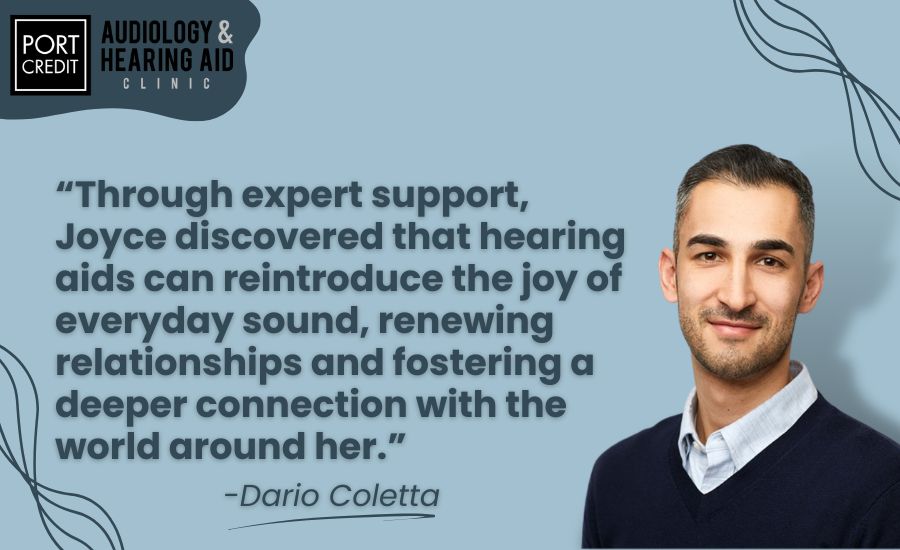Professional Hearing Aid Cleaning
Ensuring your hearing aid is kept in good repair will help your device to maintain the same high level of performance throughout its life. Among the maintenance and repair services we provide in our Port Credit Audiology & Hearing Aid Clinic is a professional cleaning every six months, which includes:
Always consult your hearing care provider with questions or problems about your hearing aids.
Three of the Most Common Hearing Aid Repair Issues
An important part of owning a hearing aid and using it daily is proper cleaning and maintenance of the instrument. When you neglect this essential care, your hearing aids will require repair. Most hearing aid repairs are associated with one of three common issues:
Wax buildup within the delicate electronic components
Excessive moisture that leads to corrosion or shorting out
Broken components and loose wires from daily wear, dropping/stepping on the device, or faulty components
NOTE: Daily cleaning, avoiding moisture and performing frequent inspections to identify problems before they get worse can limit the necessity for and reduce the investment of hearing aid repairs.
Troubleshooting for Five Common Hearing Aid Problems
Digital electronics offer significant advantages, but they can have their issues. However, by recognizing these five common hearing aid problems and understanding how to deal with them, you can avoid hearing aid downtime and continue to receive the benefits they provide.
Feedback/Whistling
Hearing aids are made up of three main components: a microphone that detects sound, an amplifier to increase sound volume and a receiver to transmit sounds to your ear canal. When amplified sound boomerangs from the ear canal back to the microphone, you will experience feedback or whistling.
Remedy:
Make sure your device’s earmold or dome is properly inserted.
Check the volume and turn it down if it’s too loud.
Replace the wax filter, if applicable.
Address any excess buildup of cerumen or earwax.
Distorted/Weak Sound
Amplified sound is not coming through as strongly as it should or is distorted.
Remedy:
Make sure the batteries are specifically compatible with your device, free from dust and dirt and replaced if old or potentially not working well.
Give rechargeable models a good charge following manufacturer’s instructions.
Inspect the earmold for earwax or debris.
Check for moisture in the device and dry it using a hearing aid dryer, a dehumidifier or a gentle wiping of the hearing aid before letting it fully dry.
Look for a broken or loose receiver wire or tubing.
No Sound At All
You’re not hearing any sound from your device.
Remedy:
Make sure the device is turned on, the battery is installed and the microphone isn’t muted.
Replace the battery with a fresh one or ensure both the hearing aid and the charger are fully charged.
Look for a clogged earmold and clean it out as instructed by your hearing care provider.
Inspect the device for a disconnected receiver wire or acoustic tube.
Rapid Battery Drainage
If the hearing aid is left on for extended periods, the battery can lose charge more rapidly.
Remedy:
Turn hearing aids off when not in use, especially overnight.
Old batteries or poor-quality batteries drain faster as well.
Rechargeable devices last between three to four years and may need a professional checkup.
Device Not Connecting to Bluetooth
Many modern digital hearing aids are enhanced by Bluetooth connectivity, making it possible to stream music, phone calls, video conversations and other audio sent directly from a sound source to your hearing devices. When your device fails to connect with Bluetooth, you won’t be able to take advantage of these features.
Remedy:
Ensure that Bluetooth is active on both your hearing aid and the source device.
Confirm that the devices haven’t already paired, which may occur automatically.
Make sure your hearing aid and source device are within range for the connection to take place.
Check to see if you are missing wi-fi access or apps that are required for the source device to work.
Unpair other devices that may already be interfering with the pairing of your hearing aids to the source device.
Restart the pairing process following the instructions in the hearing aid manual.












